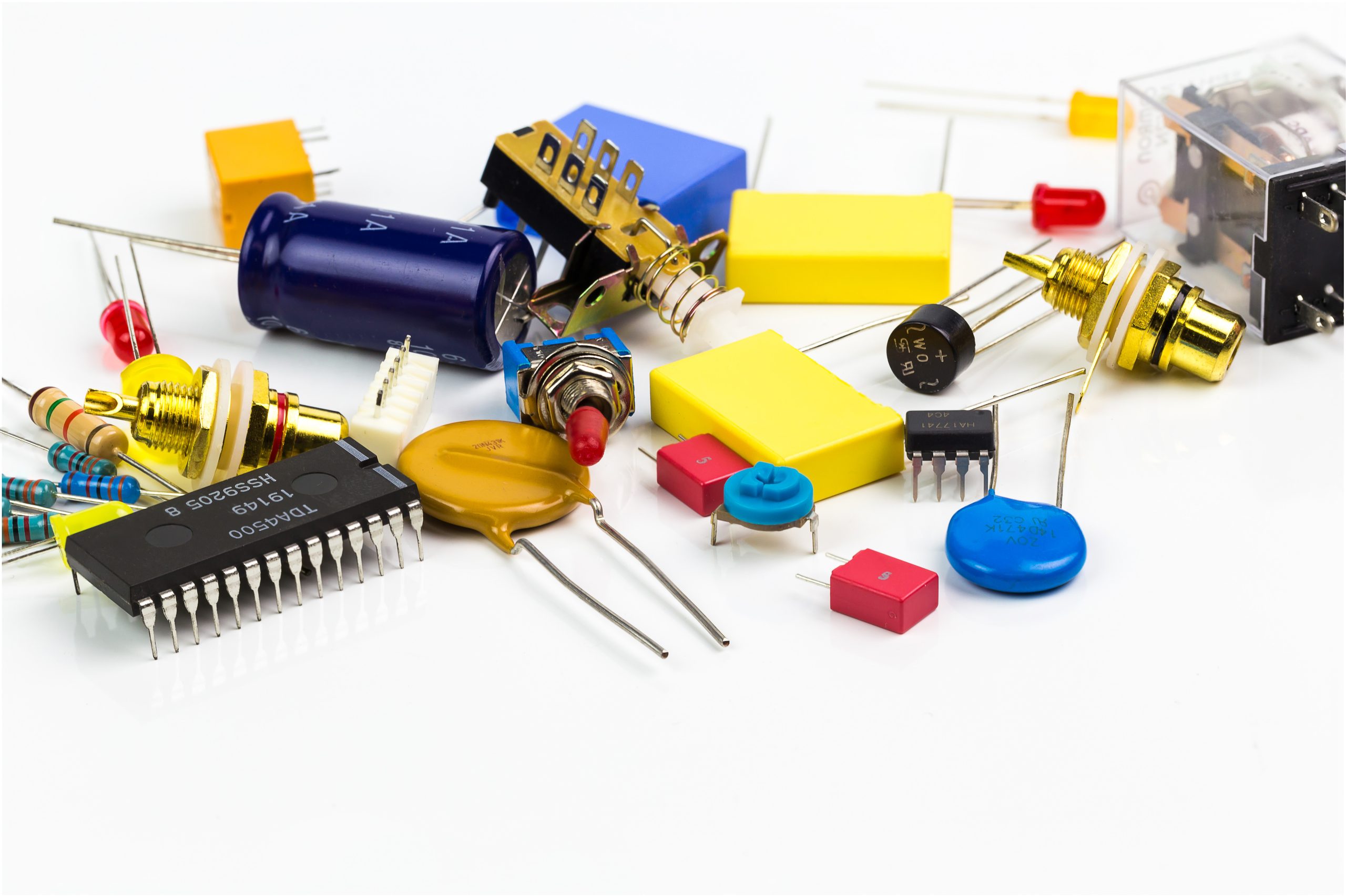What Are Electronic Components?
Electronic components are basic building blocks used in electrical circuits. They are categorized as either passive or active components, each playing a vital role in circuit design and operation.
Passive Components: These do not generate power but store or dissipate it. Examples include resistors, capacitors, and inductors.
Active Components: These components supply energy or amplify signals. Examples include transistors, diodes, and integrated circuits.
Let’s dive deeper into the key electronic components and their roles.
1. Resistors
Resistors control the flow of electric current in a circuit by providing resistance, measured in ohms (Ω). They help regulate voltage levels and protect sensitive components from excessive current.
Types of Resistors:
Fixed Resistors: Provide a constant resistance value.
Variable Resistors (Potentiometers): Allow adjustment of resistance.
Thermistors: Resistance changes with temperature.
2. Capacitors
Capacitors store and release electrical energy. They are widely used for filtering, energy storage, and signal coupling in circuits. Their unit of measurement is the farad (F).
Common Types:
- Ceramic Capacitors: Small, inexpensive, and used in high-frequency applications.
- Electrolytic Capacitors: High-capacity storage, often used in power supplies.
- Tantalum Capacitors: High stability and reliability, used in space-sensitive circuits.
3. Inductors
Inductors store energy in a magnetic field when electrical current passes through them. They are commonly used in power supplies, radio-frequency applications, and transformers.
Key Uses:
- Filtering noise in power supplies
- Signal processing in communication devices
- Energy storage in switching power supplies
4. Diodes
Diodes allow current to flow in one direction while blocking it in the other. They are essential in rectification (converting AC to DC) and signal processing.
Common Types:
Light Emitting Diodes (LEDs): Emit light when current passes through them.
Zener Diodes: Maintain a stable voltage across a circuit.
Schottky Diodes: Have a low voltage drop and are used in fast-switching applications.
5. Transistors
Transistors are semiconductor devices used for switching and amplification. They form the foundation of modern electronic devices, including microprocessors and amplifiers.
Types of Transistors:
Bipolar Junction Transistors (BJTs): Used in analog circuits and amplifiers.
Field-Effect Transistors (FETs): Used in digital circuits and power management.
6. Integrated Circuits (ICs)
Integrated Circuits are miniaturized electronic circuits etched onto a semiconductor wafer. They contain multiple components such as transistors, resistors, and capacitors in a single package.
Applications:
- Microcontrollers for embedded systems
- Operational amplifiers for signal processing
- Memory chips for data storage
7. Sensors
Sensors detect and respond to changes in the environment, converting physical phenomena into electrical signals. They play a critical role in automation and IoT (Internet of Things) applications.
Common Sensors:
- Temperature Sensors
- Motion Sensors
- Light Sensors
8. Switches and Relays
Switches control the flow of current manually, while relays provide automatic control over circuits. Relays use electromagnets to switch circuits on and off.
Types of Switches:
- Toggle Switches
- Push Button Switches
- Rotary Switches
9. Power Supply Components
Power supplies ensure a stable and regulated voltage to electronic devices. Common components include:
Transformers: Convert AC voltage levels.
Rectifiers: Convert AC to DC.
Voltage Regulators: Maintain constant voltage output.
